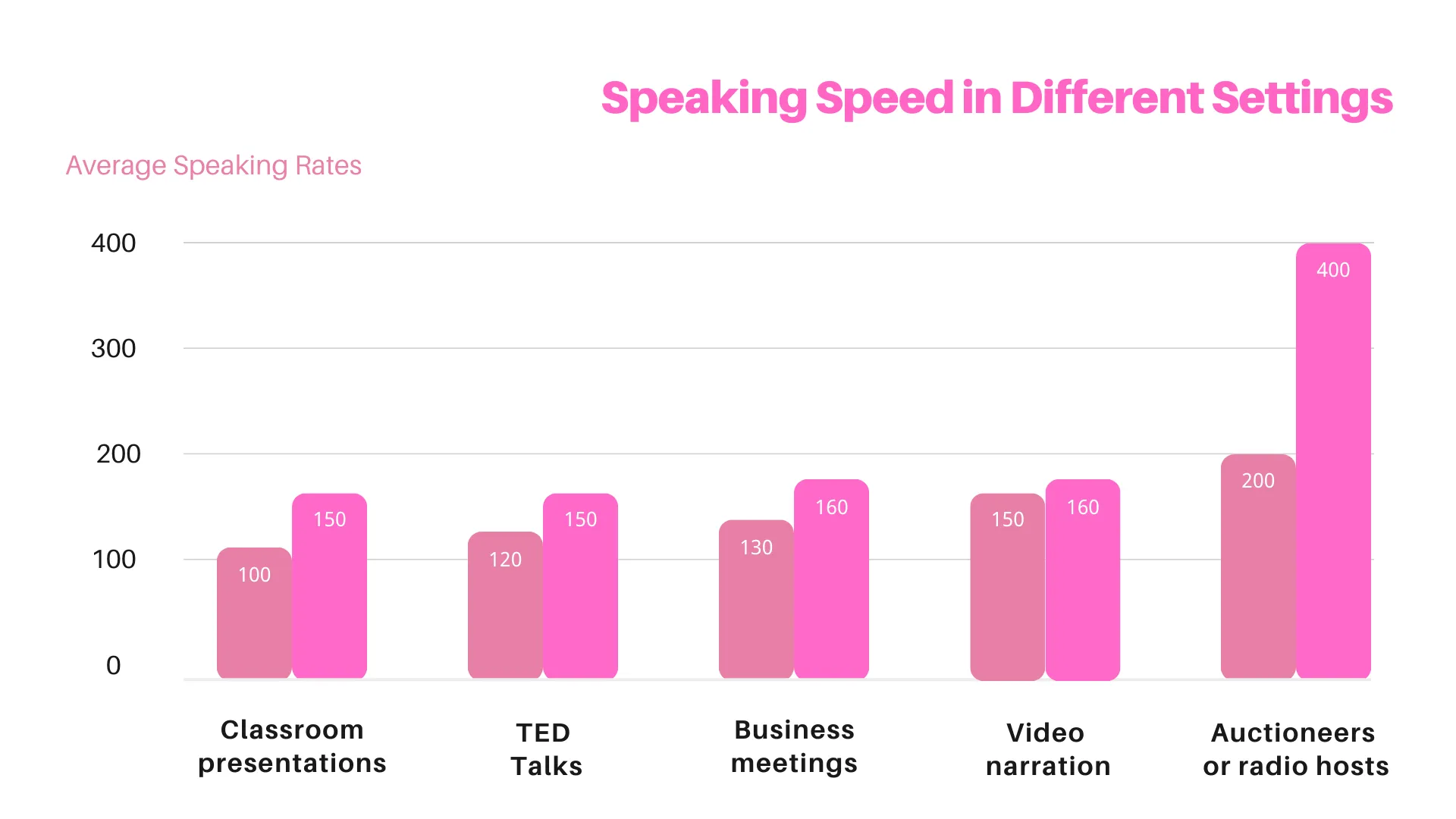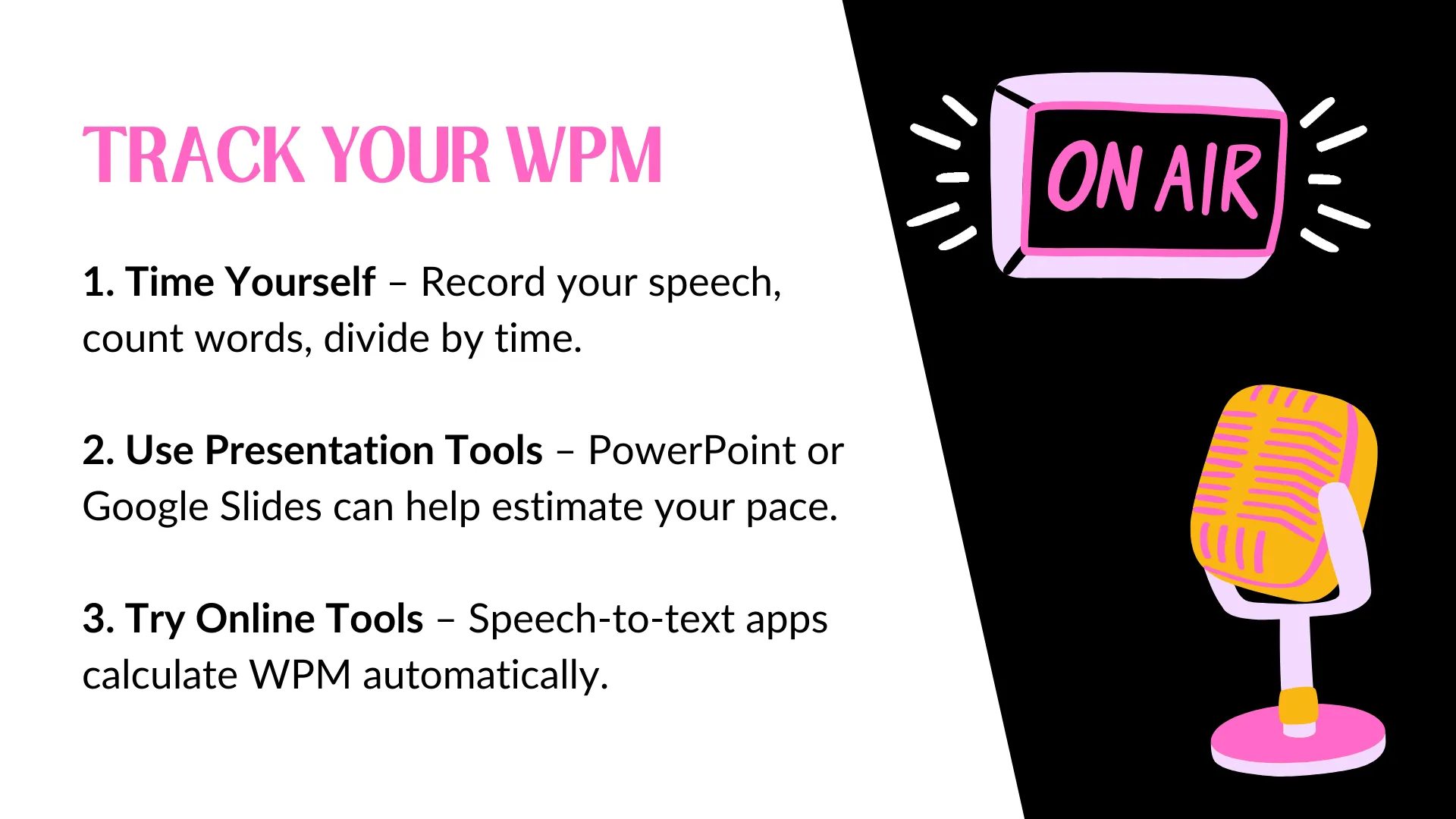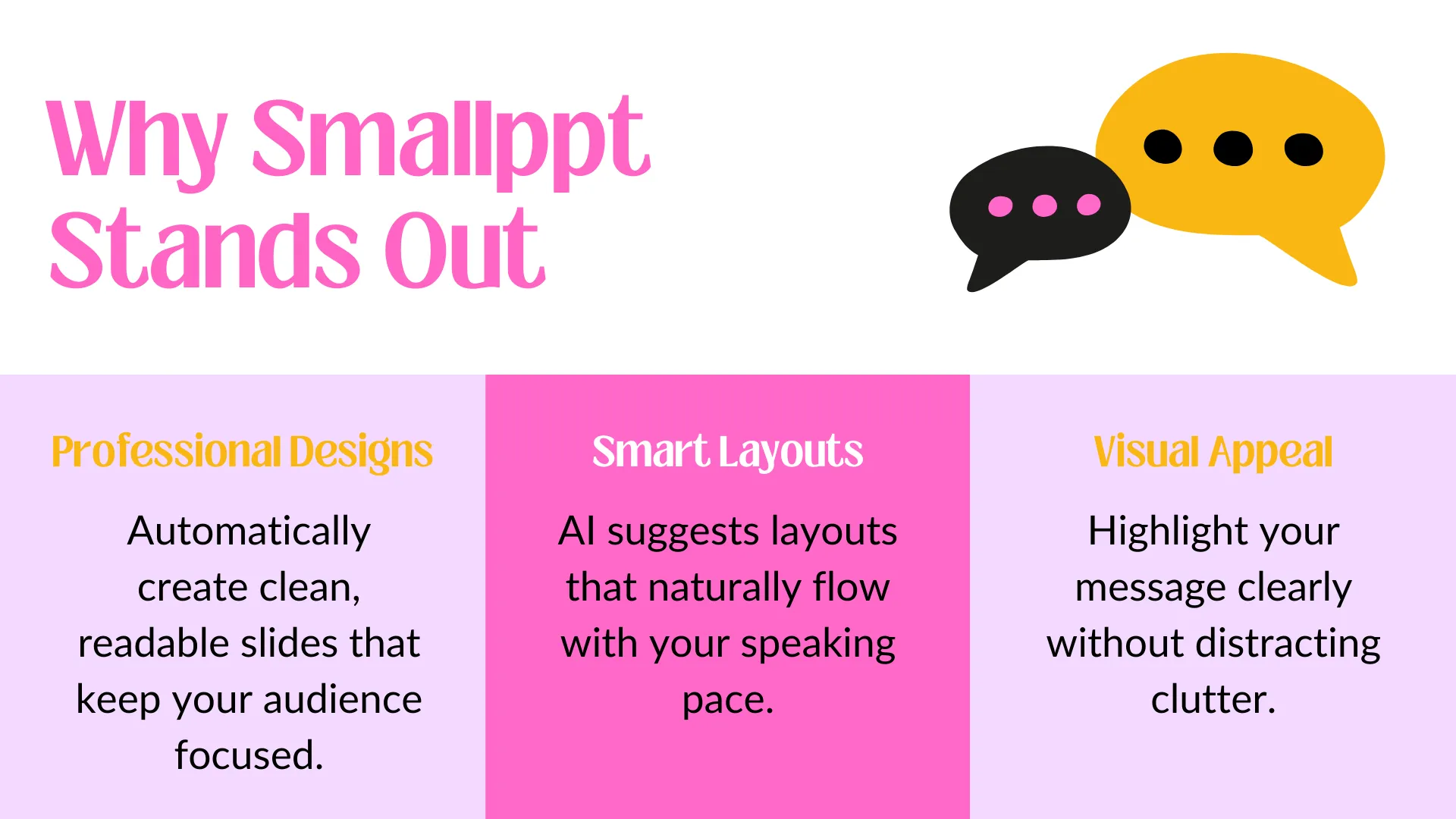
Have you ever caught yourself in the middle of a speech or presentation, wondering, “Am I talking too fast… or way too slow?” The truth is, your speaking pace can make or break how well your audience understands you—and how long they actually stay tuned in.
The right speed doesn't just make your message clearer; it also makes you come across as more professional and confident. So, how many words per minute is the “sweet spot” for a great speech? In this guide, I'll share the ideal range you can aim for, plus a few simple ways to figure out whether you should hit the brakes or pick up the pace.
About speaking rate aka words per minute
Words per minute (WPM) is a simple but powerful way to measure speaking speed—it tells us how many words a person delivers in just one minute.
Speaking rates usually fall into a few main categories:
- Slow (100–120 WPM):Great for delivering complex ideas or emotional messages, such as serious speeches or storytelling.
- Normal (130–160 WPM): The most common range, often used in classroom lectures, business meetings, and most public speaking situations.
- Fast (170–200 WPM):Brings energy and excitement, but if you go too fast, your audience can quickly lose track.
In different settings, the "speaking average words per minute” can vary:
- Classroom presentations: 100–150 WPM
- TED Talks:120–150 WPM
- Business meetings: 130–160 WPM
- Video narration: 150–160 WPM
- Auctioneers or radio hosts: 200– 400WPM

Why does this matter? Because your speaking rate directly shapes how well people understand and remember what you're saying. Too slow, and you risk boring your audience. Too fast, and they might miss your key points. Hitting that “ideal words per minute” sweet spot not only makes your message clearer but also makes you come across as confident, professional, and relatable.
How to Calculate Words Per Minute
There's a simple formula you can use to figure out your speaking rate during a presentation or speech:
Total Words / Number of Minutes = Speaking Rate (WPM)
Pretty straightforward, right? If you'd like to measure your actual speaking speed, here are a few practical methods that work really well:
- Time Yourself and Record It: Grab a stopwatch, read a script out loud, and record yourself. Once you're done, count the total number of words and divide by the time.
- Use Presentation Tools:Programs like PowerPoint or Google Slides often have built-in word count and slide timing features. Together, they can give you a rough estimate of your average talking speed.
- Try Online Tools or Speech-to-Text Apps: Record your speech, upload it to one of these tools, and they'll calculate your words per minute automatically.

So, why does knowing your speaking speed matter?
- It helps you plan the length of your speech so you can stay within your time limit.
- It prevents you from rushing through your content or dragging it out too long.
Here's a quick example: if you're preparing a 10-minute speech and you aim for around 140 words per minute, you'll want a script that's about 1,400 words long.
Getting a clear sense of your speaking rate not only keeps your presentation more organized, but it also helps you find your own “ideal words per minute”—making your delivery smoother, more confident, and a whole lot more engaging for your audience.
Why not try it right now? Grab a timer, run through a paragraph, and see where your speaking speed lands.
How to Practice and Control Your Speaking Rate
If you want to keep your speaking speed within the ideal range, practice is your best friend. For most presentations, aiming for around 130–160 words per minutes the sweet spot—it keeps your message clear and makes it easier for your audience to follow along.
Here are a few practical ways to rehearse:
1. Time Yourself with Slide Presentations
Run through your slides with a timer to check whether you're staying within your target speaking rate.
2. Adjust Your Pace as You Go
Notice you're racing ahead or dragging too much? Slow down or speed up until you find a natural, steady rhythm.
3. Leverage PowerPoint's Rehearse Timings Tool
This feature lets you sync slide transitions with your natural speaking flow, creating a smoother and more polished delivery.

Consistent practice doesn't just help you master your public speaking rate—it also builds confidence, improves pacing, and makes it easier for your audience to stay engaged. The more natural your rhythm feels, the more likely your listeners will stay with you from start to finish.
Pro tip: Treat every practice round like the real thing. That way, by the time you step up to deliver your presentation, your words per minute will already feel second nature.
Make Your Content More Presentable with Smallppt
If you want your presentation to feel professional and easy for your audience to follow, two things matter most: your speed of speaking and the design of your slides. That's where Smallppt, an AI-powered presentation tool, really shines. It helps you create polished, audience-friendly slides in minutes.
Here's what makes Smallppt stand out:
- Automatically generates clean, professional slide designs: Your content becomes easier to read, and your audience can naturally keep pace with your words.
- Smart content and layout suggestions:The AI adapts layouts to match a natural speaking speed, so your slides flow right alongside your delivery.
- Stronger visual appeal without the clutter: Audiences focus on what you're saying, not get distracted by messy design.

With Smallppt, you can quickly put together a presentation that looks professional, flows with your public speaking rate, and makes “how many words per minute” you're speaking feel perfectly natural. The result? A smoother, more persuasive talk every time.
Whether you're prepping for a class presentation, a business pitch, or a big public speaking event, give Smallppt a try. It's an AI presentation tool designed to make your message sharper, your delivery clearer, and your audience more engaged.
FAQs: About Words Per Minute in Speeches
Q1: What is the ideal speaking speed?
A clear and engaging pace is usually around 130–160 words per minute (WPM). This range helps ensure your audience can easily understand you while staying attentive throughout your speech.
Q2: How many words should a 10-minute speech have?
At about 140 WPM, a 10-minute speech would need roughly 1,400 words. If your topic is complex, slow down a bit; if it's motivational or energetic, you can speak a little faster.
Q3: What happens if I speak too fast?
When your pace exceeds 180–200 WPM, your audience may struggle to keep up. This can reduce comprehension and make you sound nervous or rushed.
Q4: How can I improve my speaking speed control?
Try recording yourself, timing your practice runs, and using PowerPoint's Rehearse Timings feature. The key is to consistently aim for your target speaking speed.
Q5: Are there tools that can help me pace my speech?
Absolutely. Both Smallppt and PowerPoint can help you design slides and rehearse your timing, ensuring your words per minute match the natural flow of your presentation.


